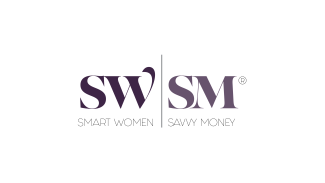
Roths = Tax-Free Buckets
Roth investment accounts... Hmmm! Folks often tell us that they have heard of Roth IRAs, Roth 401(k)s, and other kinds of Roth accounts. But they don’t feel confident about choosing them because they don't fully understand the benefits of having a Roth account. But, frankly, mostly everyone is interested in building out a “Tax-Free Bucket”. And for that reason, Roths are something you should consider.
If you’re asking if it’s really worth the effort to get a Roth account, the short answer is, “Yes! Having a Roth is worth it.” This is especially true if you are interested in building a “Tax-Free Bucket”. Roths provide an opportunity to sock away money that will never be taxed when it is withdrawn. In addition, they provide opportunities to not only save for retirement, but also support the needs of your current life, if necessary. Contributions or rollovers to Roth IRAs can be withdrawn at any time, at any age, and are not subject to taxes or penalties. Easy-breezy access!
Moreover, as many of us have heard, there could be an increase in federal taxes beginning in 2022 for high-income individuals and families. So, 2021 is a key year to explore and understand the benefits of Roths and your interest in creating or expanding a “Tax-Free Bucket”. We’re happy to share what you need to know because there are actually a few different ways to get there. Here are the top items you need to know about.
1. All Roth contributions are made with after-tax dollars
Contributions made to any account titled as a Roth—whether it’s a 401(k), 403(b), Thrift Savings Plan (TSP), or Individual Retirement Account (IRA)—can only be funded with after-tax dollars. In other words, your income will not be reduced by the contributions, as it is with traditional retirement accounts. However, whatever gains your Roth account makes will grow and can be withdrawn on a tax-free basis, provided that the owner meets certain guidelines. Working with a financial planner can help you identify the best path for you to take when considering a Roth.
2. Your employer probably already offers a Roth plan
The majority of employer-provided retirement plans—such as 401(k), 403(b), and TSPs—include not only pre-tax contribution plans, but after-tax Roth accounts as well. Frankly, this is one of the easiest ways to start building your “Tax-Free Bucket”. Contributions can be split up in any manner between the traditional and Roth retirement plan, as long as the combined contributions don’t exceed the annual maximum payment rule. Note that employer matches are made only on pre-tax retirement accounts, regardless of which accounts your contributions are made to.
For 2021, the maximum contribution into employer retirement plans is $19,500. For employees age 50+, an additional contribution of $6500 can be made—for a total of $26,000. These figures can change based on updates to the tax code, so check with your financial planner and/or tax professional every year when setting your contribution levels.
As an example, suppose a 52-year-old employee decides to max out her contributions to her 401(k) plan for this year at $26,000. She decides to put $15,000 into the pre-tax 401(k) and the balance of $11,000 into the Roth 401(k). Her taxable income will be reduced by $15,000, and she gets the employer match on this amount. The $11,000 will be taxed as regular income. However, the portfolio growth withdrawal from her Roth 401(k) will not be taxable once she is older than 59½, as long as the account has been active for at least 5 years.
3. What about a Roth IRA?
Roth IRAs have an added advantage. They offer account holders the ability to access their contributions at any time, regardless of their age or how long the account has been open—and there are no taxes or penalties. Additionally, the appreciated value of the Roth IRA can be withdrawn on a tax-free basis if account holder is older than 59½ years and the Roth IRA has been established for at least 5 years.
This is why having a Roth and being knowledgeable about your access can be extremely beneficial. Since you can access your contributions at any time, a Roth IRA is a great way to save for retirement and current lifestyle needs as well—such as buying a house, paying off debt, or having funds available for that inevitable rainy-day emergency. And here’s where it is really beneficial: first-time home buyers can not only withdraw their contributions, but they can also take out up to an additional $10,000 of gains in their account. Provided that the Roth has been opened for at least 5 years, the gains will not be taxed. If the account has been open for less than 5 years, the $10,000 in gains is still accessible but is subject to taxation.
Funding a Roth IRA is subject to some income limitation rules (contribution limits based on how much you earn), and these are generally updated annually. However, for employer-provided plans, there is no income limitation—which is why I say funding a Roth 401(k) is easy-breezy. For 2021, the maximum income you can have to contribute to a Roth IRA is $140,000 for singles; for people who are married, filing jointly, the maximum combined income is $208,000. However, even if your income exceeds those income limits, building your Tax-Free Bucket can still happen—by going “Through the Back Door”!
4. Too much income for a Roth IRA? Try a “BACK DOOR”
The “back door” strategy is a popular technique that provides individuals with higher income the ability to still fund a Roth IRA. Here's how it works:
- First, set up two IRA accounts: one is a traditional IRA and the other one is a Roth. The traditional IRA can be funded up to the maximum limits (for 2021: $6,000 if you are under age 50 or $7000 for age 50+) with after-tax contributions.
- Next, wait one full day, and then roll the traditional IRA funds into the Roth IRA. This strategy will be tax-neutral since it was funded with after-tax dollars in the first place. Once the funds get into the Roth account, they can begin growing the value. Contributions can be made in any year that one has income—there is no age limitation.
Additionally, you can “convert” funds from pre-tax contributions to retirement accounts into the Roth; however, any pre-tax assets/funds that are “converted” to the Roth will be taxed as regular income. Working with your financial planner and/or tax professional will help you determine the best steps for a conversion strategy.
5. Fewer age-based rules on withdrawals
Beginning at age 72, traditional retirement accounts require mandatory annual distributions known as RMDs (Required Minimum Distributions). This rule applies to traditional IRA accounts, as well as employer-provided plans if the person is no longer employed by the company but left their retirement account behind in the employer’s plan. RMD withdrawals are subject to taxation. Why? Because those funds have never been taxed—neither the contributions nor the earnings. With Roth IRAs and employer-provided plans, the contributions have already been taxed, so there is no mandatory requirement for you to withdraw funds at a certain time. This means those dollars can continue to grow on a tax-free basis for as long as you like—for you or for your beneficiaries. You can also continue to fund a Roth account as long as you have wages, regardless of your age.
The bottom line is this: creating Tax-Free Buckets of assets can and should be an integral part of your long-term financial lifestyle strategy. And the earlier you start, the bigger that bucket will be! Even if you are getting started a little later, you still have a lifetime ahead to fund and enjoy it. But another major—and impactful—benefit for Roth accounts is that withdrawals are tax-free not only to the owner but also to their beneficiary(ies) as well. Something to consider for long-term financial and estate planning.

